Canine Coronavirus Vaccination
 Canine coronavirus is an acute and highly contagious intestinal disease of dogs. The disease causes depression, vomiting, and diarrhea. The symptoms are similar to canine parvovirus; however the disease is less severe and fatalities are rare. Occasionally, very young or weak puppies, as well as older geriatric dogs, become severely dehydrated and die from the disease.
Canine coronavirus is an acute and highly contagious intestinal disease of dogs. The disease causes depression, vomiting, and diarrhea. The symptoms are similar to canine parvovirus; however the disease is less severe and fatalities are rare. Occasionally, very young or weak puppies, as well as older geriatric dogs, become severely dehydrated and die from the disease.
The majority of dogs infected with canine coronavirus are asymptomatic (have no symptoms). These asymptomatic animals are often the source of the virus for healthy, noninfected dogs. Particularly susceptible to the disease are show and field trial animals and dogs that are kenneled (boarded).
Canine coronavirus is transmitted from the feces of infected dogs to noninfected animals via the oral route. Infected animals can shed the virus for several months after clinical symptoms have disappeared. Asymptomatic dogs shed the virus as well.
Since canine coronavirus can cause severe vomiting, diarrhea, and dehydration, veterinary care is required. Using laboratory tests, a veterinarian can distinguish between canine coronavirus and parvovirus.
Since the effectiveness of canine coronavirus vaccine is controversial, many hospitals do not use it. Your veterinarian can recommend a prevention strategy that is specific for your pet.


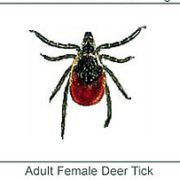

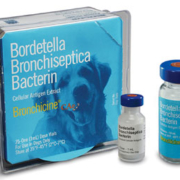


 Leptospirosis is a disease that infects dogs, humans and other animals. The organism that causes the disease is a type of bacterium called spirochete. Leptospirosis is spread by recovered animals that shed the spirochete in their urine for months to years following infection. Exposure to the disease usually occurs in the environment from contaminated water, food, soil, or vegetation. The Leptospirosis organism penetrates through the interior lining of the mouth (mucosa) or through injured skin. Wild animals, especially rats, are carriers of the disease.
Leptospirosis is a disease that infects dogs, humans and other animals. The organism that causes the disease is a type of bacterium called spirochete. Leptospirosis is spread by recovered animals that shed the spirochete in their urine for months to years following infection. Exposure to the disease usually occurs in the environment from contaminated water, food, soil, or vegetation. The Leptospirosis organism penetrates through the interior lining of the mouth (mucosa) or through injured skin. Wild animals, especially rats, are carriers of the disease.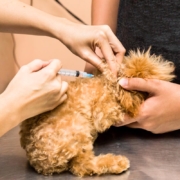
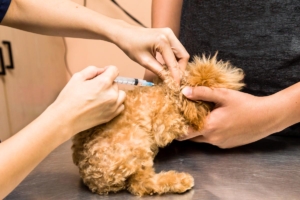 Infectious canine hepatitis is a contagious viral disease of dogs, foxes and other canids. The disease should not be confused with human hepatitis, even though both diseases cause liver problems. Dogs and other canids do not transmit the disease to humans!
Infectious canine hepatitis is a contagious viral disease of dogs, foxes and other canids. The disease should not be confused with human hepatitis, even though both diseases cause liver problems. Dogs and other canids do not transmit the disease to humans!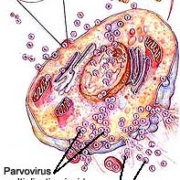
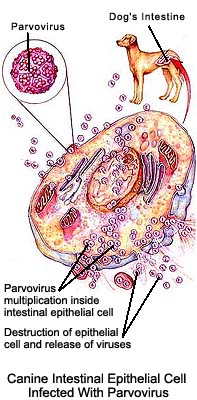

 Distemper is a common, highly contagious and often fatal disease found in dogs, wolves, coyotes, raccoons, skunks, mink and ferrets. The disease is most often seen in young, unvaccinated dogs, as well as older dogs who have not been vaccinated regularly. The period between exposure to the virus and symptoms is approximately five to nine days.
Distemper is a common, highly contagious and often fatal disease found in dogs, wolves, coyotes, raccoons, skunks, mink and ferrets. The disease is most often seen in young, unvaccinated dogs, as well as older dogs who have not been vaccinated regularly. The period between exposure to the virus and symptoms is approximately five to nine days.
